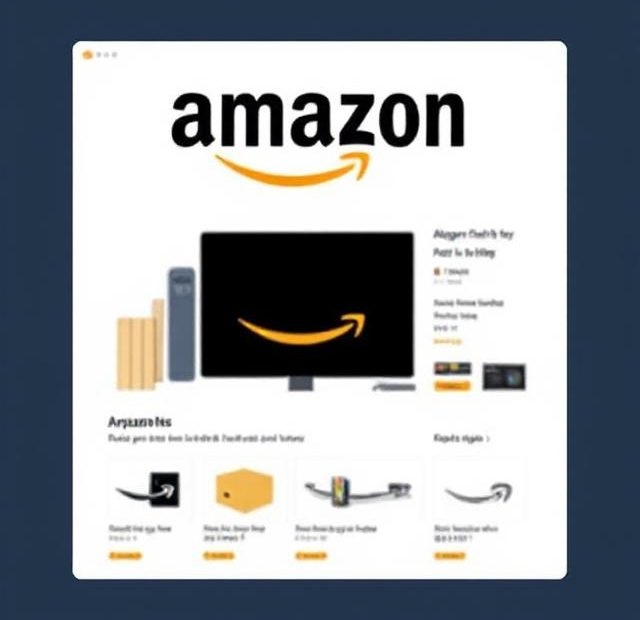If you’re selling on Amazon, you’ve probably heard about Amazon PPC—but what exactly is it, and how can beginners use it to increase sales?
PPC stands for Pay-Per-Click, Amazon’s advertising platform where sellers pay when a shopper clicks on their ad. It’s a powerful tool, but without a clear strategy, beginners can quickly waste money. This guide will walk you through the basics of an Amazon PPC strategy for complete beginners so you can launch, manage, and optimize your first campaign with confidence.
What Is Amazon PPC?
Amazon PPC is Amazon’s in-house advertising solution that allows sellers to promote their products directly in search results and product pages. You create ads for specific keywords, and when someone searches that keyword, your ad may appear.
You only pay when someone clicks on your ad—hence “pay-per-click.”
There are three main ad types:
-
Sponsored Products (most popular)
-
Sponsored Brands (brand logo + multiple products)
-
Sponsored Display (retargeting and cross-promotion)
Why Beginners Should Use Amazon PPC
Even if you have a great product, organic rankings take time. PPC helps you:
-
Increase product visibility
-
Get faster sales
-
Gather valuable keyword data
-
Boost organic rankings over time
Without PPC, your product might get buried under thousands of others, especially in competitive niches.
Step-by-Step Amazon PPC Strategy for Beginners
Step 1: ✅ Set Clear Goals
Before launching any ad, ask:
-
Do you want to increase sales fast?
-
Are you trying to test product-market fit?
-
Is your goal brand awareness or profitability?
Your Amazon PPC strategy should align with your business goals. For beginners, focus on visibility and sales velocity, not immediate profits.
Step 2: ✅ Start with Sponsored Products
Sponsored Products are easy to set up and deliver high ROI. They appear in search results and on product pages.
Amazon gives you two targeting options:
-
Automatic targeting (Amazon chooses keywords)
-
Manual targeting (you choose keywords)
✅ Pro Tip: Start with automatic targeting for 7–10 days to gather data. Then create a manual campaign based on the best-performing keywords.
Step 3: ✅ Do Keyword Research
Keywords are the foundation of a successful PPC campaign. Tools like:
-
Amazon’s Search Term Report
-
Helium 10
-
Jungle Scout
-
Google Keyword Planner
Help you find high-volume, low-competition search terms.
Split your keywords into:
-
Broad match: captures a wide range of searches
-
Phrase match: more targeted
-
Exact match: most specific
✅ Start with 10–20 relevant keywords and test from there.
Step 4: ✅ Set a Realistic Budget
For beginners, start with a daily budget of $10–$20 and a default bid of $0.75–$1.50 per keyword.
Adjust based on performance. Don’t overspend early on. You’re buying data, not just sales.
✅ Monitor your ACoS (Advertising Cost of Sale). Ideal ACoS varies, but for beginners, aim under 30% to stay profitable.
Step 5: ✅ Track and Optimize Campaigns
Once your campaign is live:
-
Monitor impressions, clicks, CTR, conversions, and ACoS
-
Pause underperforming keywords
-
Increase bids on high-performing keywords
-
Add negative keywords to block irrelevant traffic
Optimization should be done weekly for best results.
Step 6: ✅ Use Product Targeting
Besides keywords, you can also target specific products—yours or competitors’. This is perfect for:
-
Cross-selling your own listings
-
Placing ads on weaker competitors’ product pages
-
Capturing comparison shoppers
✅ This often results in lower CPCs and higher conversions.
Step 7: ✅ Gradually Expand to Sponsored Brands & Display
Once you’re comfortable with Sponsored Products, explore:
-
Sponsored Brands: Showcase your brand and multiple products in one ad
-
Sponsored Display: Retarget people who visited your page or similar products
These are great for brand awareness, but start simple and build slowly.
Common Amazon PPC Mistakes to Avoid
-
Launching only manual campaigns without keyword data
-
Not setting a daily budget or bid cap
-
Ignoring ACoS and campaign reports
-
Using too many keywords at once
-
Not adding negative keywords
-
Focusing only on sales, not on learning
Remember: Amazon PPC is a data game. You win by testing, tracking, and tweaking.
Final Thoughts
An effective Amazon PPC strategy for beginners doesn’t require a huge budget or advanced tactics. It requires a clear goal, good keyword research, a basic campaign setup, and consistent optimization.
With this foundation, you’ll not only drive traffic to your listings—you’ll also build long-term visibility, improve rankings, and grow sales sustainably.
Also, you can learn more about Amazon Marketing here.
